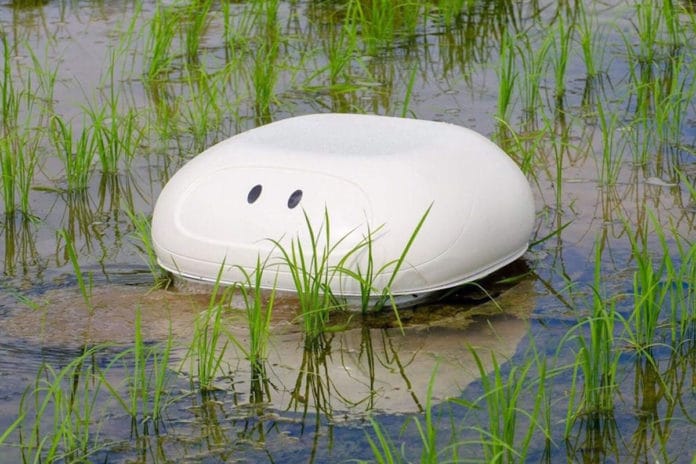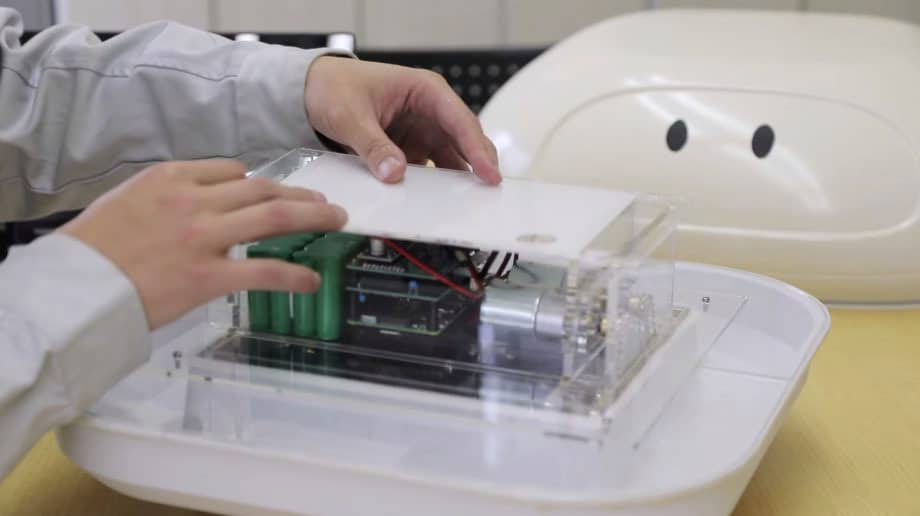For rice farmers, ducks have been a viable way to keep their crops healthy instead of harmful pesticides. Specially trained ducks are released into the paddy fields and feast on insects and weeds, which allows the rice crops to grow. They also eat the weed’s seeds, preventing the new weeds from growing around the plants, their manure even acting as additional fertilizer.
Now, an engineer working for Japanese carmaker Nissan has built a robot alternative to paddy field ducks, a low-tech solution, into a sustainable one to help farmers reduce the use of herbicides and pesticides on the rice crop.
The duck-farming robot is about 60 centimeters square (shaped like a robotic vacuum cleaner) and weighs around 1.5 kilograms. The robot will help oxygenate the water by stirring it up with two rubber brushes mounted at the base of its feet, which will prevent weeds from taking root.
It’s fully equipped with GPS to navigate the fields and a WiFi connection. It works on- solar power to minimize its environmental impact.
Tetsuma Nakamura, the Nissan Engineer, built this robot to help his friend. Watch the video of the robot in action. Unfortunately, there are no English subtitles to explain what we’re watching fully. Still, it’s an interesting robot that manages to mix both old and new agricultural technologies.
He is now testing his prototype in Yamagata Prefecture, northeastern Japan, reports Nippon.com. It looks like it is a personal DIY project with no plans for commercialization. They have not provided any data on how effective it is, but it is an interesting utilization of technology.
The robot replicates processes used in nature, and since robots do not get tired, it could make these processes more efficient. Besides, it could potentially solve some problems in Japan, such as its declining population and shortage of workers.

